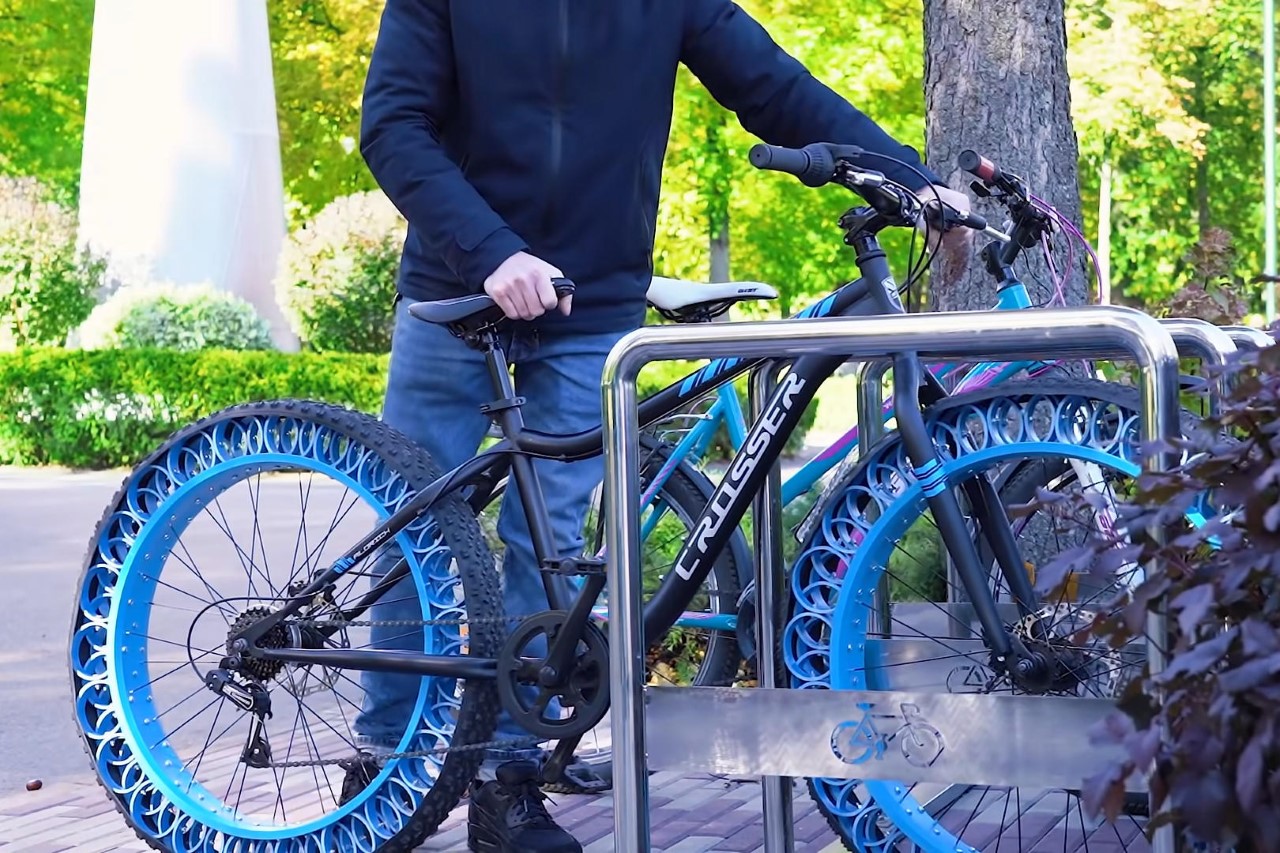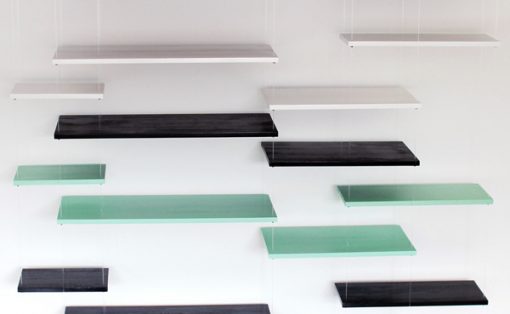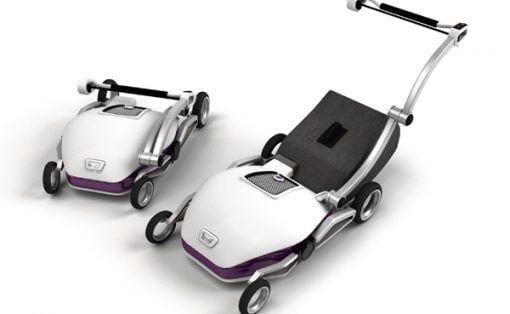It’s safe to say that making Wheel-less Bicycles wasn’t enough for YouTuber The Q. The crazy builder is back with yet another zany invention – creating airless tires that are rugged, have shock absorption, and are entirely handmade from sliced PVC pipes.
Airless tires have been around for practically decades, and even NASA has seen the merits of building tires that aren’t pressurized or prone to puncturing. However, their invention hasn’t really affected consumer-grade vehicles yet, given how complex they can be to manufacture. Most airless tires like this crazy concept by Michelin rely on incredibly complex algorithms that generatively design the wheels, which are so intricate that they can only be built using 3D printers. The Q circumvents that with a lifehack of his own – using cross-sections of a PVC pipe to replicate the same bounce of a regular tire with the robust reliability of an airless one.
Designer: The Q
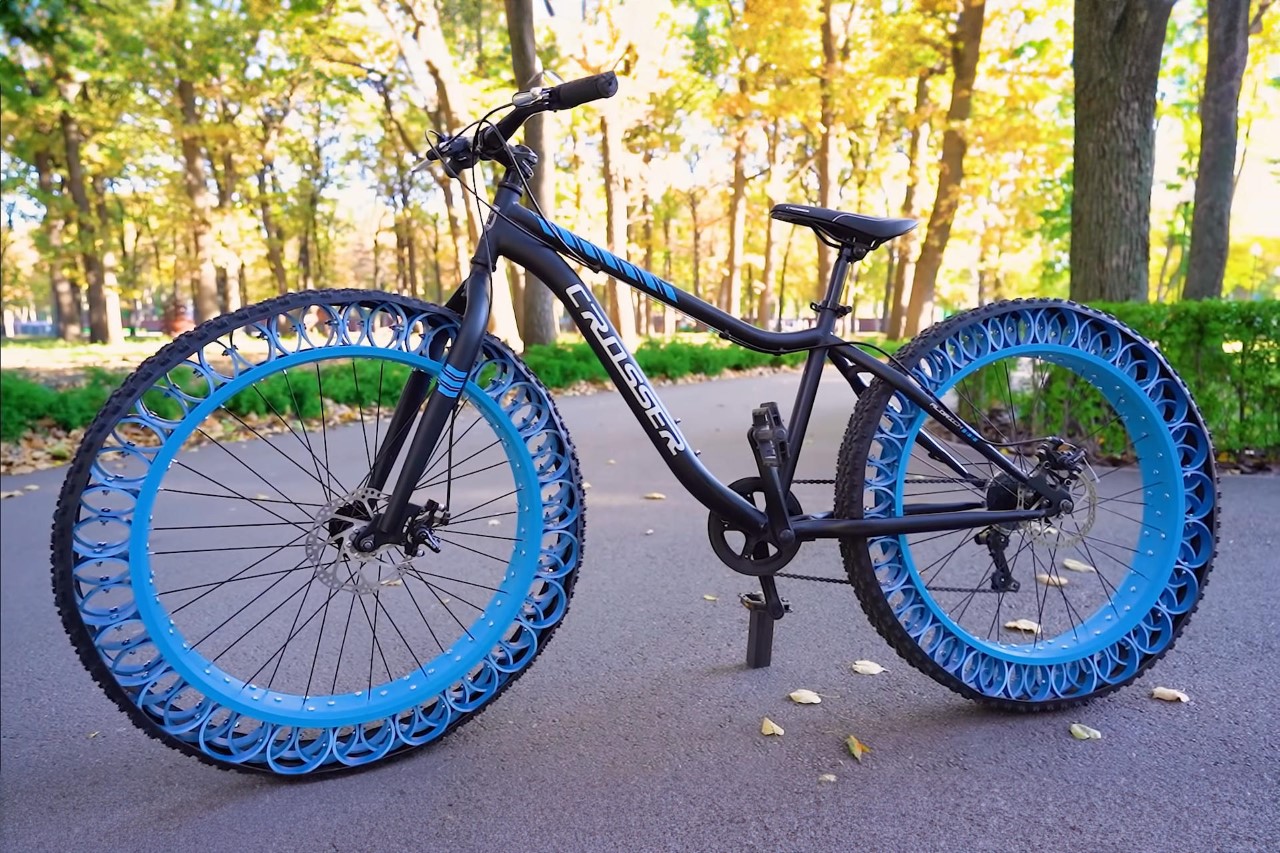
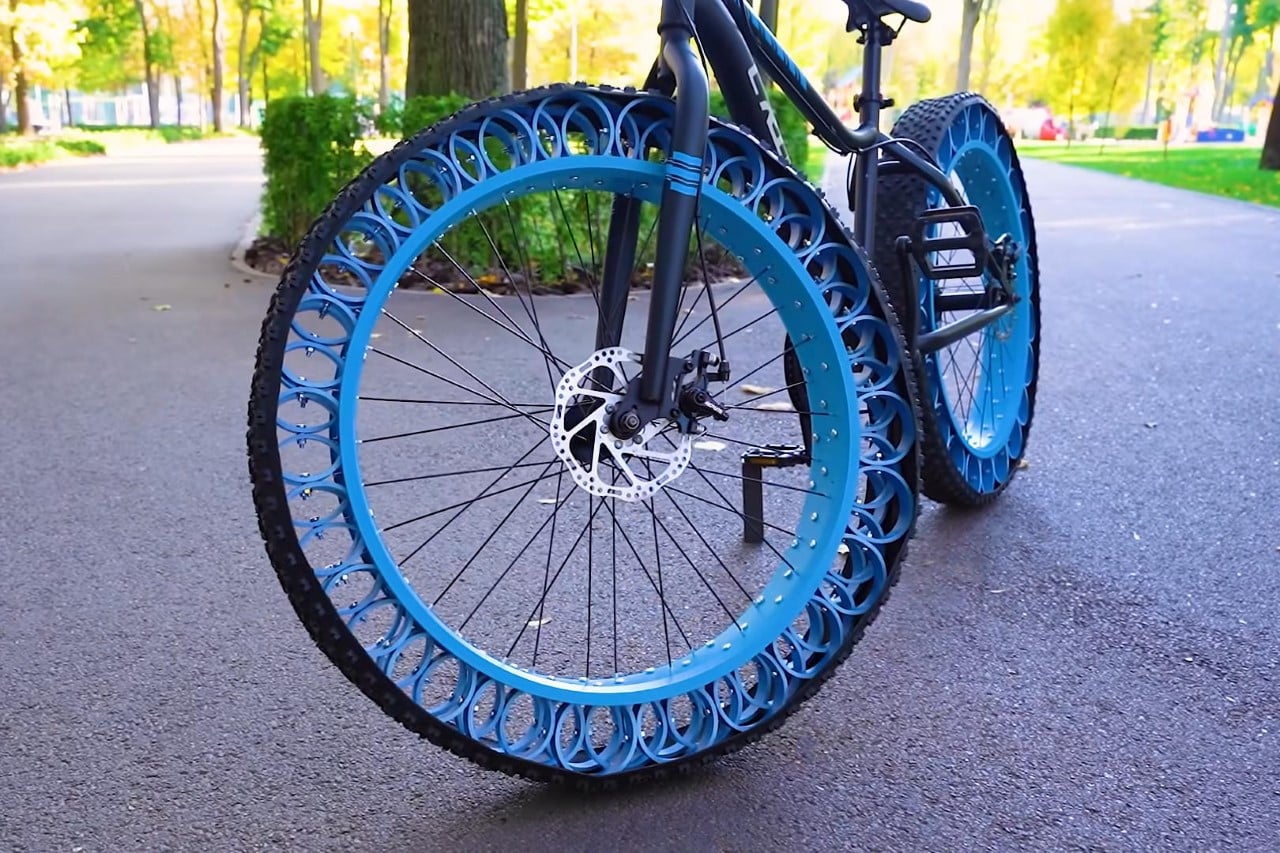
The tire’s design bases itself on one of The Q’s older prototypes, which used 60 tennis balls instead. Although that solution seemed a lot more MacGyvered than an actual design proposition, this PVC pipe version has all the hallmarks of a clever life hack that could actually work and provide great results. Besides, a long chunk of PVC pipe beats having to buy and replace tennis balls every few weeks.
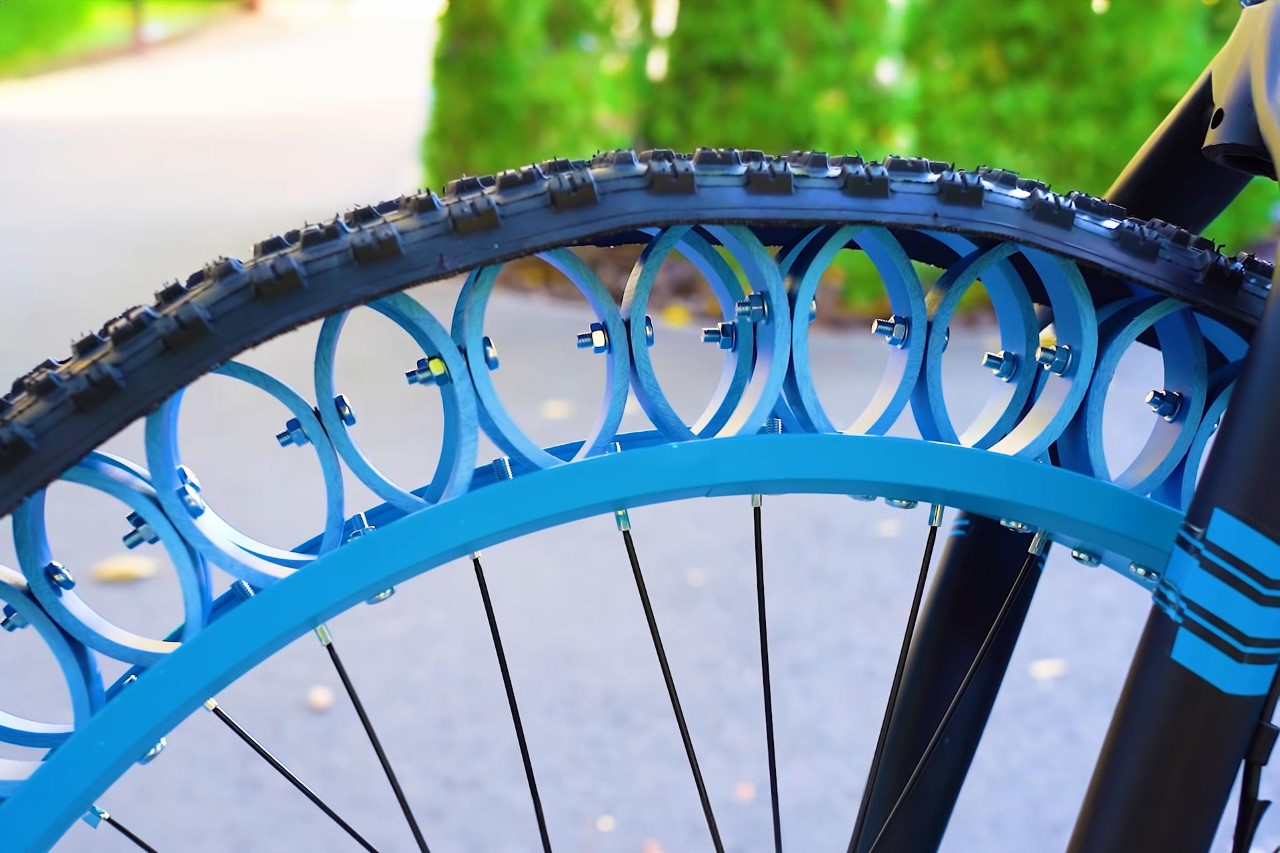
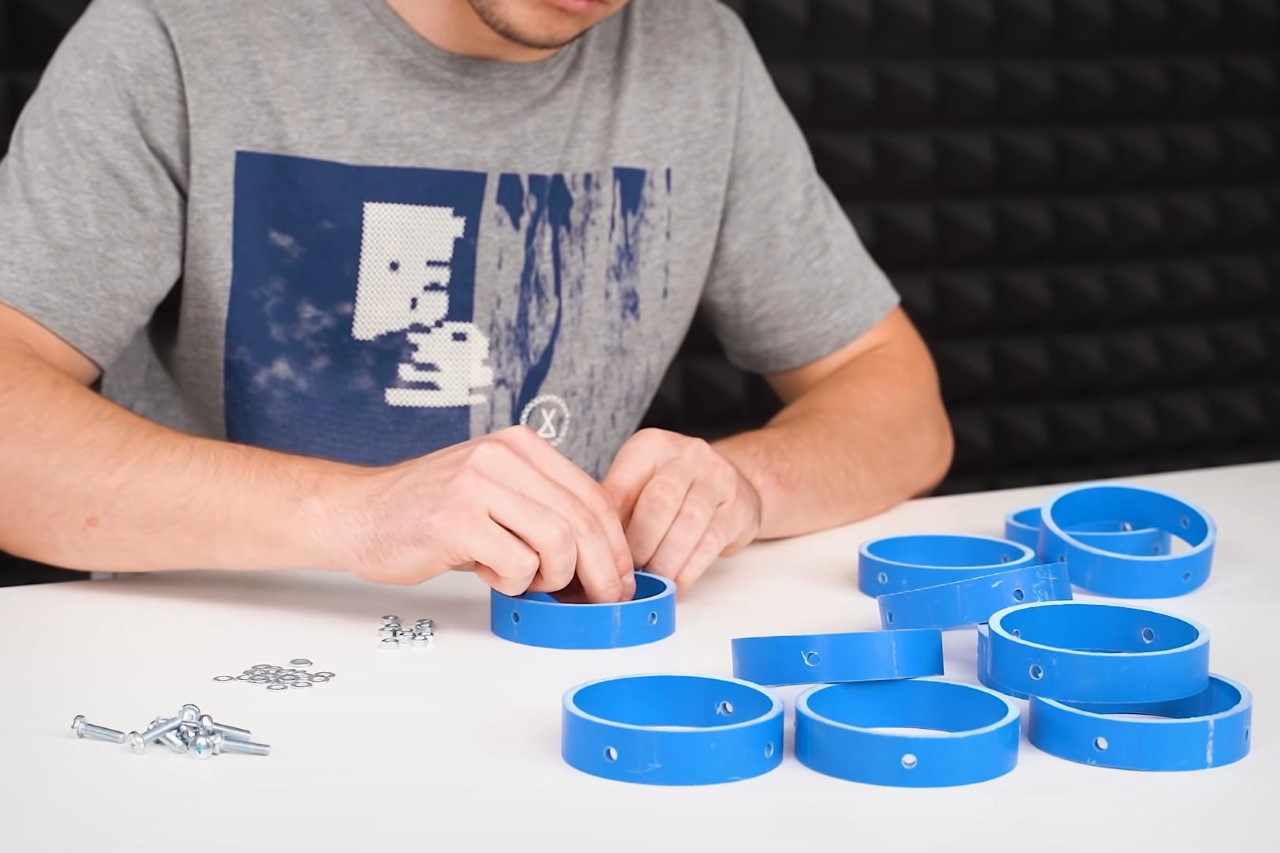
To make the airless section of the tire, The Q started out by cutting out 1-inch thick sections of the PVC pipe (it also entailed choosing the right, sturdy pipe to begin with). Once he had a few hundred PVC rings, he began drilling holes into them and screwing them together around the periphery of the wheel. Each wheel required 66 PVC rings in three rows of 22 rings each, amounting to 132 rings in total. As soon as the rings were screwed together, the YouTuber mounted the wide tread on top of each wheel, completing the build.
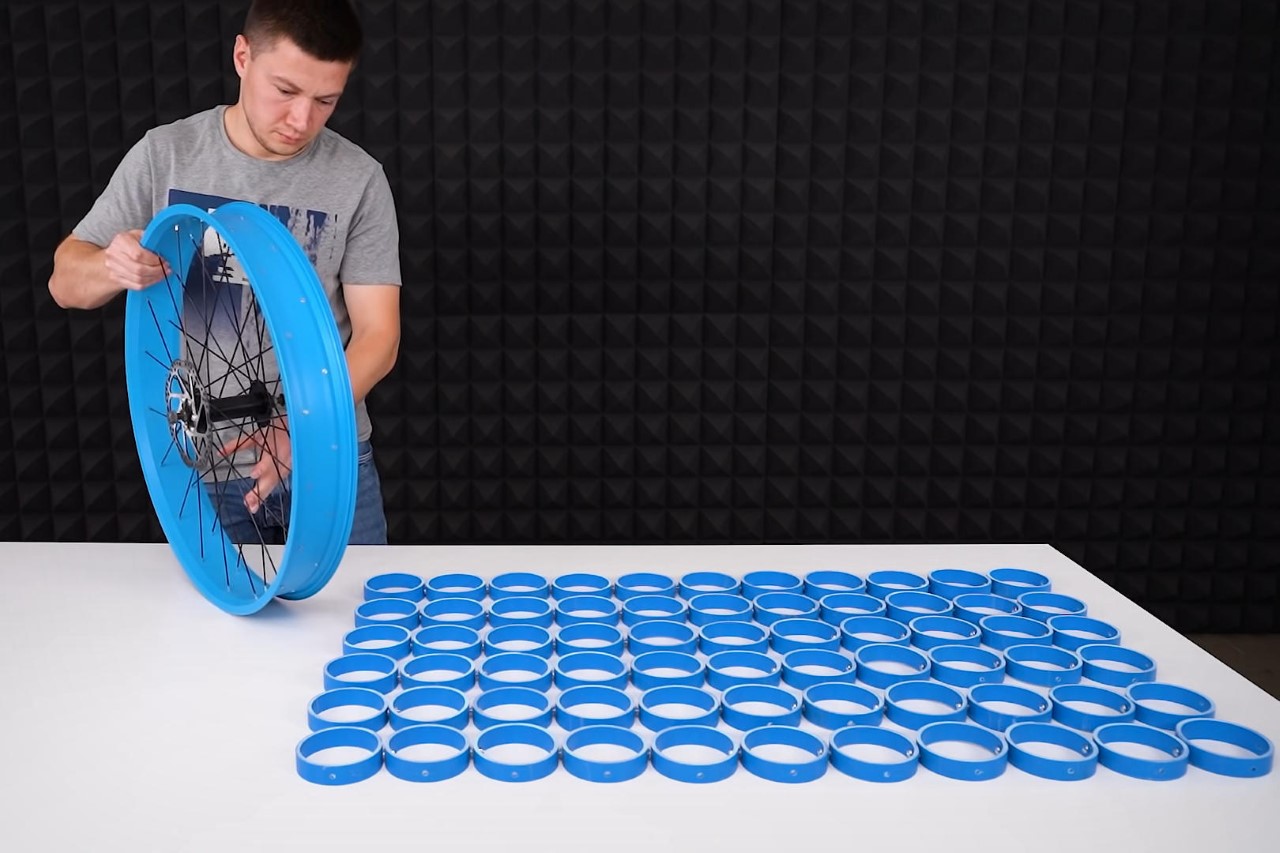
Each wheel used 66 PVC rings
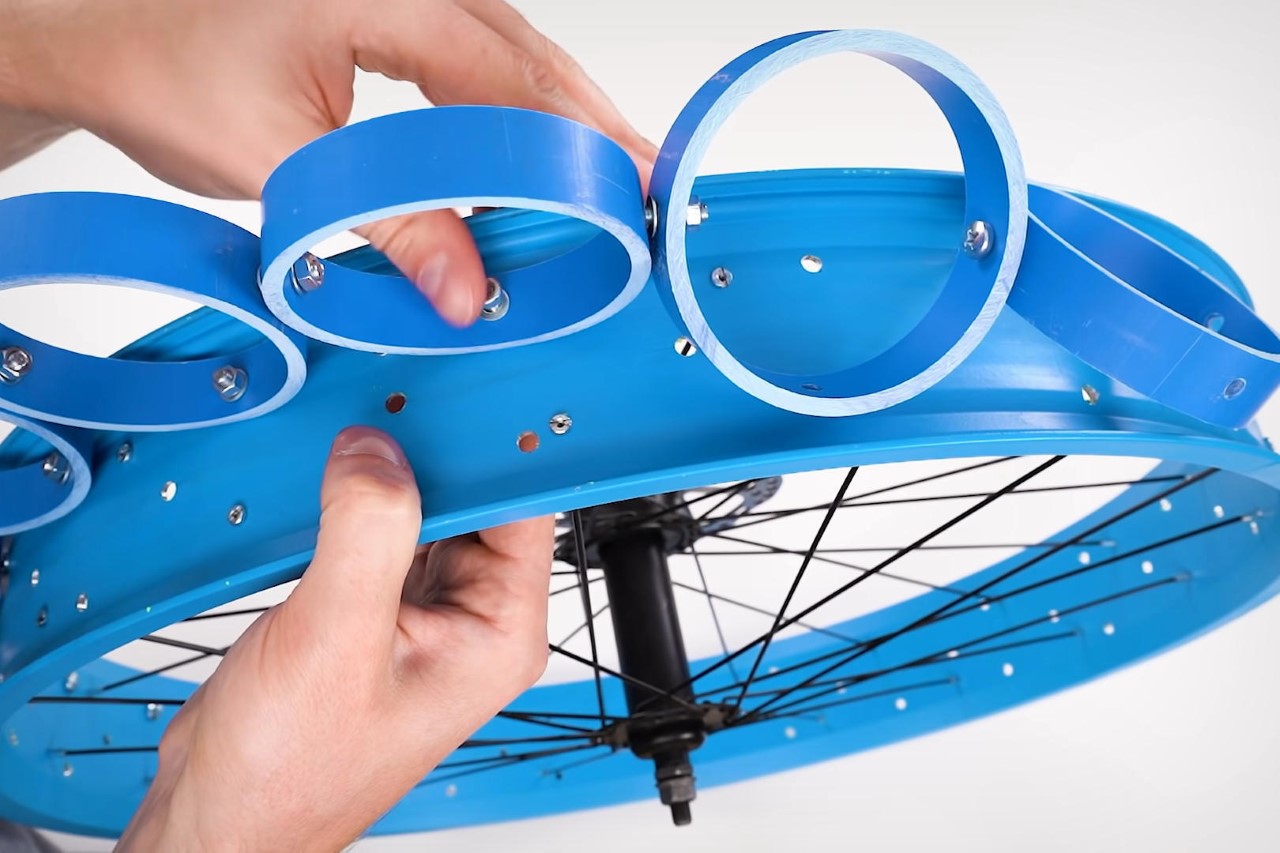
The video acts as a rather clever guide for people looking to build their own airless tires too. Finding the right diameter PVC pipe for your wheel frame may require some math or a little trial and error if you’re like me, but once you’ve found yourself the perfect PVC pipe, make sure you cut it to the right cross-sectional width to give yourself at least 3 rows of rings to ensure the wheel has a reliable and durable build. Obviously, we don’t recommend trying this for a motorcycle or a car… but it helps to just make our disclaimers clear!
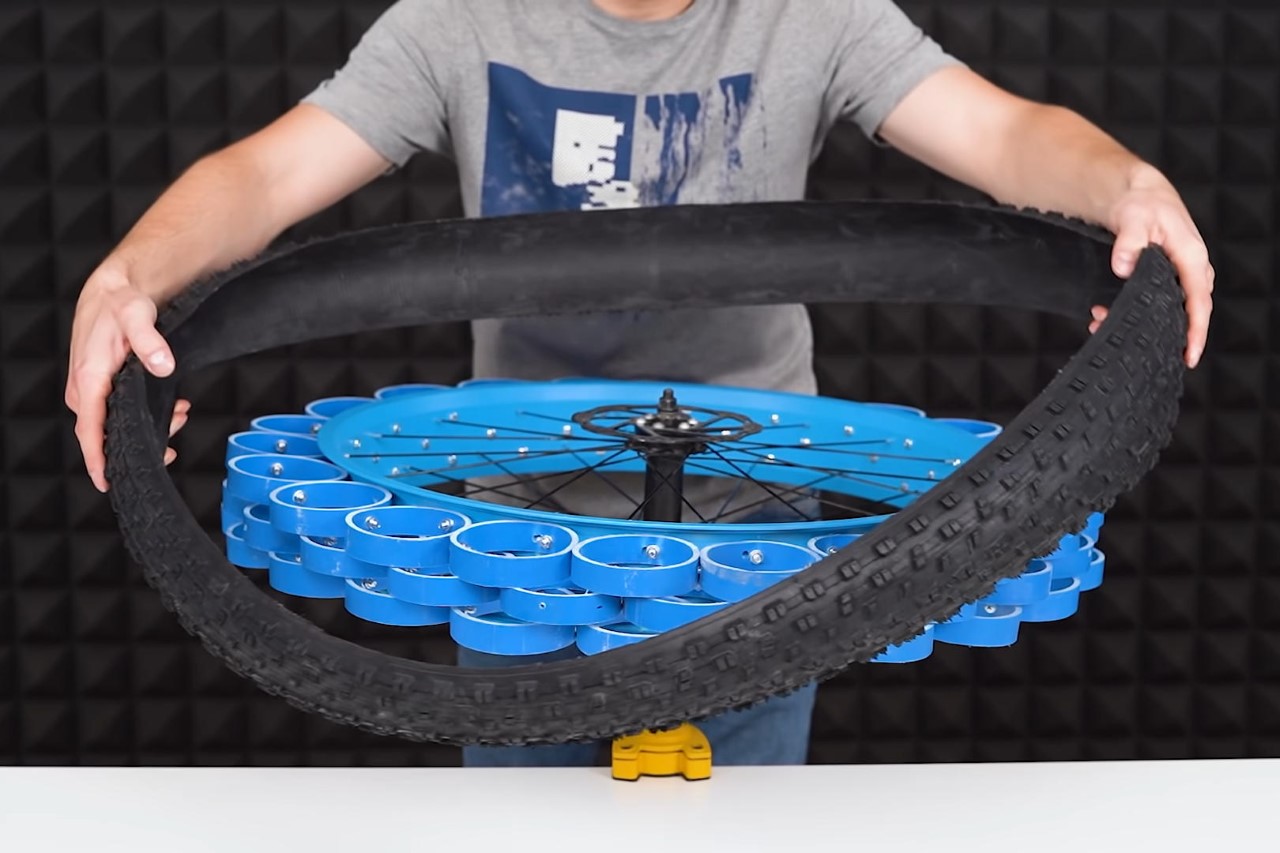
Although the tire tread mounting doesn’t look like the most secure fit, it hugged the wheel well enough for a trial run. Future builds could use an expanding PVC ring material to help securely hold the tire treads in place and prevent them from accidentally slipping off. However, the PVC construction served as a pretty decent proof of concept, requiring well under $50 worth of equipment in total.
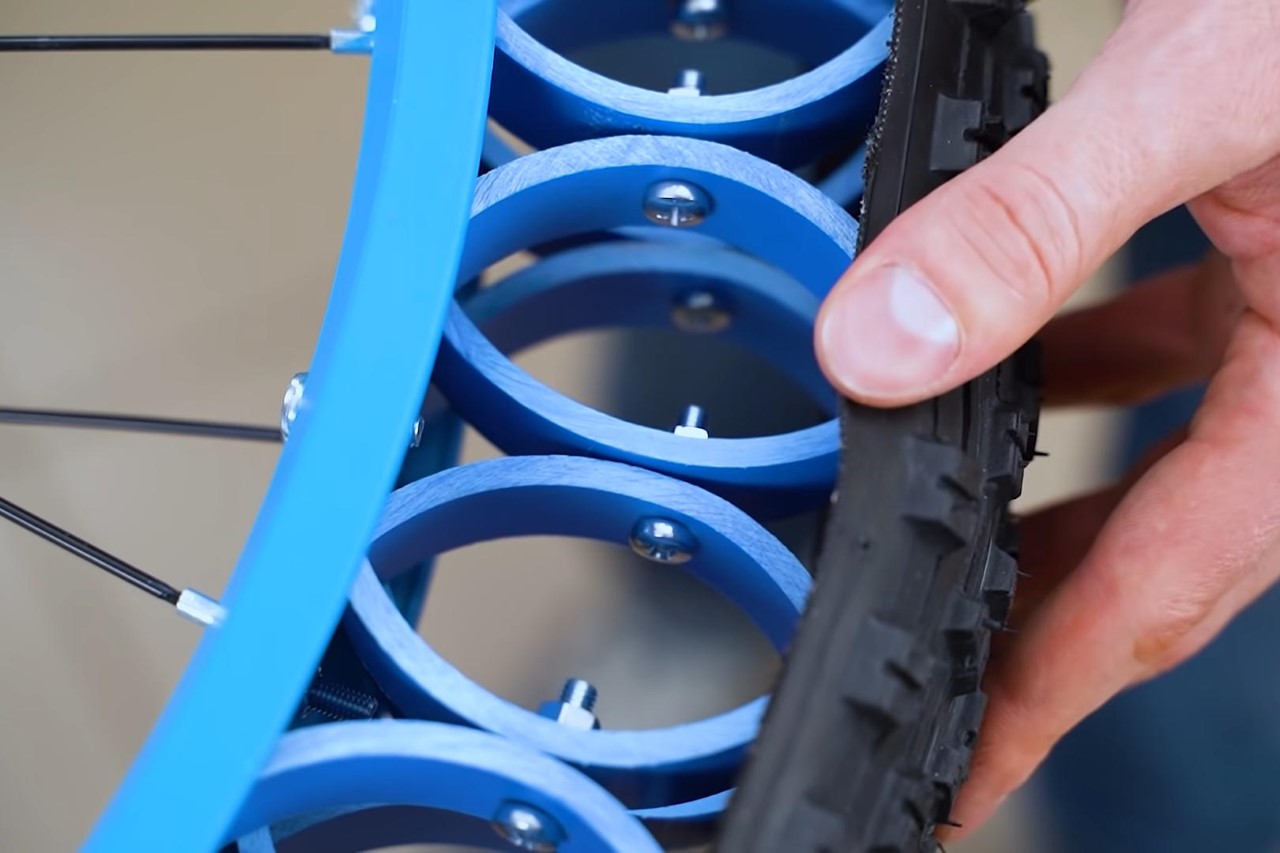
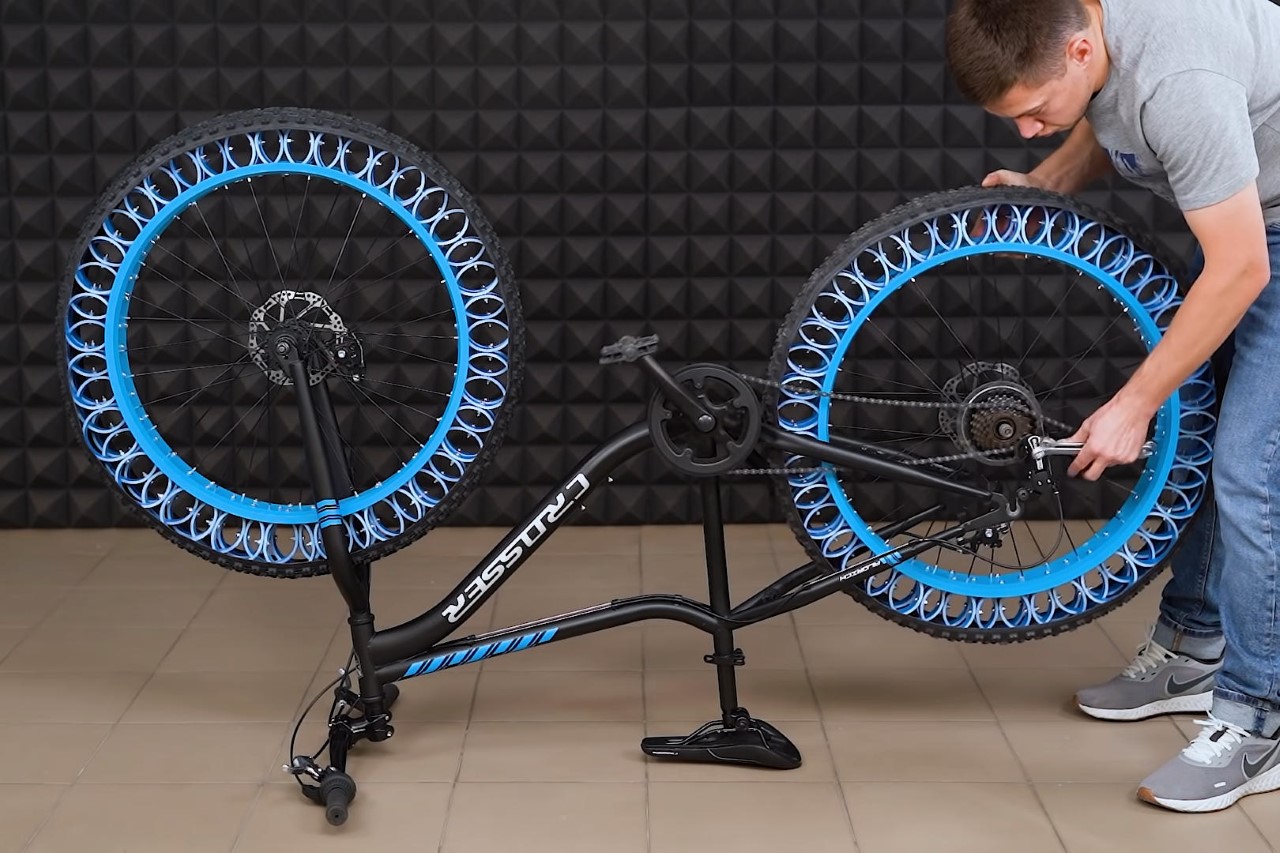
After each tire was assembled and installed back on the bicycle frame, the YouTuber took it out for a spin, riding it along on tarmac and a park pathway, occasionally alternating between the two to show the wheel’s ability to take minor bumps and undulating terrain. What The Q didn’t display in the video was rough usage (like riding down stairs) or even the condition of the wheels after a day’s worth of riding. Chances are if the wheels did incur any damage, it was probably negligible. PVC pipes are designed to be pretty durable and only show signs of wear and tear if exposed to chemicals or UV radiation like the sun. Even if one of the PVC rings does end up cracking, replacing it seems pretty easy given the broken ring can easily be visually identified, unscrewed, and replaced.
